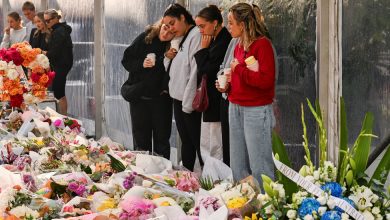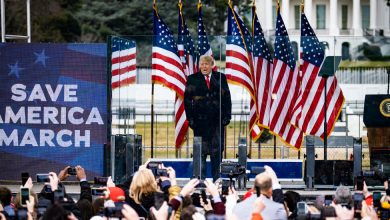Australian Government Buys Copyright to Indigenous Flag

MELBOURNE, Australia — When Laura Thompson, an Indigenous businesswoman, received a cease-and-desist letter in 2019 telling her to stop selling clothing that used the design of the Aboriginal flag because it violated the copyright, she was shocked.
“I just never thought for a moment that I could face legal action for using the Aboriginal flag that I thought belonged to all Aboriginal people,” said Ms. Thompson, who is from the Gunditjmara tribe and is the chief executive of Clothing the Gaps, a fashion social enterprise in Melbourne.
Now, two and a half years later, the Australian government has bought the copyright to the flag for 20 million Australian dollars ($14 million), a move that allows anyone to reproduce the emblem on clothing, merchandise and artworks without seeking permission or paying a fee.
“We’ve freed the Aboriginal flag for Australians,” Prime Minister Scott Morrison said in a statement announcing the acquisition on Monday night.
Some have questioned the timing of the announcement, just two days before Australia Day, a divisive public holiday that some view as a reminder of the continent’s brutal colonization and the ongoing issues like over-policing and discrimination against Indigenous people.
Others have raised concerns about the government’s taking control of the flag’s copyright.
“This is a win for grass-roots people who fought for our right to use our flag,” Lidia Thorpe, who is Indigenous and a Greens senator, said in a post on Twitter. “But I’m worried that it’s not going into community control. The Aboriginal flag belongs with Aboriginal people.”
Under the headline “Don’t say the Aboriginal flag was ‘freed’ — it belongs to us, not the Commonwealth,” Bronwyn Carlson, an Indigenous studies professor at Macquarie University in Sydney, wrote in an article published online Tuesday:
“Our flag contains our sorrows and our unity as a colonized people. It is not a ‘free-for-all’ symbol. Nor is it a symbol that can be neatly injected into the national psyche as a means of expressing some kind of racial unity that overshadows the injustice and inequality Aboriginal people experience on a daily basis.”
The red, yellow and black Aboriginal flag was created by Harold Thomas, an Indigenous artist, in 1971 to lead a march for Aboriginal rights. It quickly became a unifying symbol for Australia’s more than 500 Indigenous tribes. While the national flag was a symbol of colonialism and dispossession in the eyes of many Indigenous people, the Aboriginal flag represented their strength and struggle.
It was recognized as one of the country’s official flags in 1995 and is often flown on government buildings and public landmarks next to the national flag. It has been used by Aboriginal people and businesses for decades.
Unlike the Australian flag, whose copyright is owned by the federal government, the design and copyright of the Aboriginal flag had been owned by Mr. Thomas.
In 2018, Mr. Thomas signed a deal with WAM Clothing, giving the company the exclusive worldwide rights for the reproduction of the flag on a variety of clothing and merchandise. The duration of the deal for the rights remains unclear. But the company started to aggressively enforce its claim by sending infringement notices to sports leagues and Indigenous businesses and nonprofit organizations, including Ms. Thompson’s company.
A parliamentary inquiry into the flag’s copyright later concluded that the company’s actions had been “heavy-handed” but were “entirely legal.” The company did not immediately respond to an email seeking comment.
Ms. Thompson said she was particularly outraged that the company’s owners were not Indigenous and that one owner was previously fined by a court for selling art that claimed to be hand-painted by Aboriginal people in Australia but was actually made in Indonesia.
“No one, let alone a non-Indigenous company, should have the worldwide exclusive rights to the flag,” she said. So she started a “Free the Flag” campaign.
When the copyright dispute started, Ms. Thompson said, many organizations that had received infringement notices chose to stop using the flag rather than pay royalties to WAM Clothing. This included the Australian Football League and Rugby Australia, which stopped displaying the flag on players’ jerseys.
“It was almost like this copyright put an invisibility cloak over the flag and, in turn, we lost the visibility of the community,” Ms. Thompson said. “We lost some of that love and pride we associated with the flag,” she added. “And now that we know we can all use it, that love has returned.”
With Mr. Thomas’s sale of the copyright to the Australian government, the flag will now be managed similarly to the Australian flag, “where its use is free, but must be presented in a respectful and dignified way,” the government’s statement said.
Mr. Thomas will retain “moral rights” over the flag.
He said in a statement via the federal government that he hoped “this arrangement provides comfort to all Aboriginal people and Australians to use the Flag, unaltered, proudly and without restriction.”




